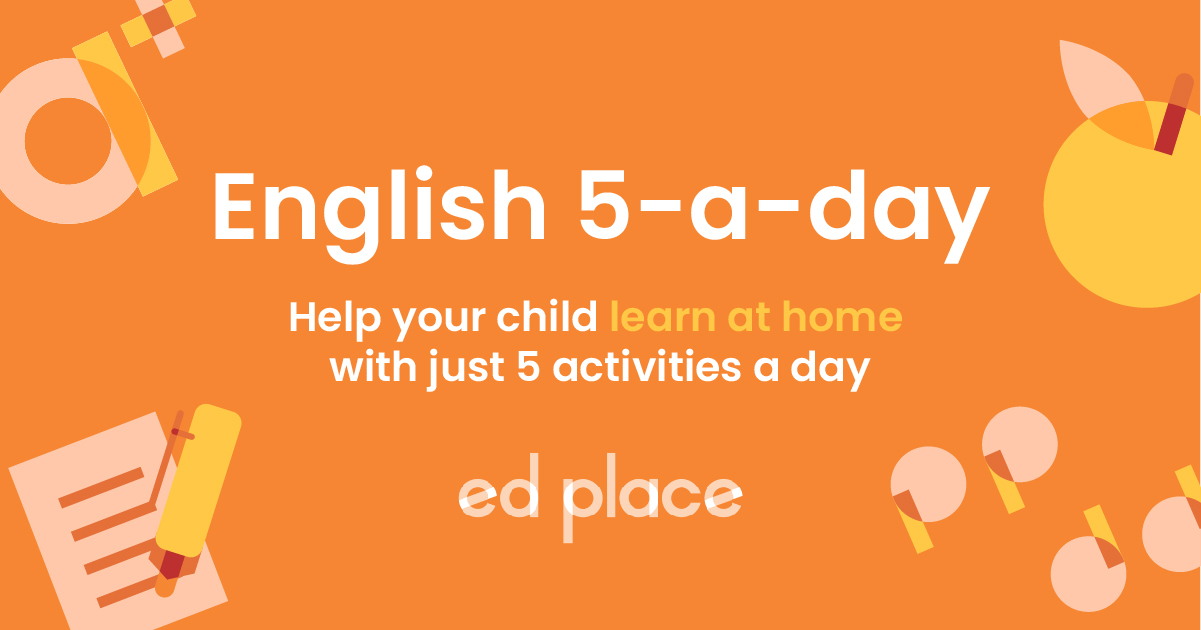
EdPlace's Y5 & Y6 Home Learning English Lesson: Active and Passive Voice
Looking for short lessons to keep your child engaged and learning? Our experienced team of teachers have created English, maths and science lessons for the home, so your child can learn no matter where they are. And, as all activities are self-marked, you really can encourage your child to be an independent learner.
Get them started on the lesson below and then jump into our teacher-created activities to practice what they've learnt. We've recommended five to ensure they feel secure in their knowledge - 5-a-day helps keeps the learning loss at bay (or so we think!).
Are they keen to start practising straight away? Head to the bottom of the page to find the activities.
Now...onto the lesson!
It's Not What You Say... It's How You Say it!
When children are writing in school, they are often judged on how they can control what goes onto their paper; do they make conscious choices or just write what comes into their head? There are many ways of showing control, one of which is using the passive voice. This is an area that often seems harder than it is; we're going to show you a simple way to break down how to spot the passive voice being used and how you can change sentences to shift what is being said.
1) Understand what is meant by the terms 'passive' and 'active'
2) Explain the differences between these two voices
3) Apply this understanding to examples
Step 1 - What Does It All Mean?
In English, we use lots of vocabulary to describe how something is written. It's worth checking how comfortable your child feels with the following key terms, do not panic if they currently aren't at all happy, as this is what we'll be going over. If they get it already, you may want to move them on quicker.
When we use the word voice in English we are not referring to the act of speaking! Rather we're describing whether a verb is active or passive in a sentence. An active voice means the subject of the sentence is performing the action. In the passive voice, the subject is having the action done to it.
Step 2 - Structure of a Sentence
Before we start looking at active and passive, we need to think about the formation of a sentence. The majority of sentences contain a subject, verb and object. We call this SVO for short. The subject usually comes at the beginning of a sentence and is the thing or person that is carrying out an action. The verb often comes after and describes the action taking place. The object then comes at the end, and is involved in the action, but does not carry it out.
Let’s look at an example:
The man (Subject) eats (Verb) the apple (Object).
Sentences that contain the order SVO are active. The subject is at the beginning and is doing the action.
Step 3 - Making it Passive
So what happens if the order is reversed and the object comes to the front of the sentence? Then it's passive! Let’s look at a different example. Here is a sentence where the subject is at the beginning of the sentence:
The dog (S) bit (V) the man (O). This is an active sentence, telling us that a dog has bitten a man.
Now look what happens when the object moves to the beginning of the sentence:
The man (O) was bitten (V) by the dog (S). This is now a sentence using the passive voice.
This changes how the sentence is presented, it's now more about the man being bitten than who he was bitten by.
Step 4 - Passive in Practice
So how can children use the passive in their writing? The most common way for the passive to be used is when writing up science experiments, or a factual report on something that has happened. Let’s say you have just conducted an experiment on conditions for growing plants and you are now going to write up what you did.
Instead of saying ‘I (S) put (V) the plant (O) on the windowsill’ (an active sentence as the subject comes first), you could use the passive voice and say ‘the plant (O) was put (V) on the windowsill….’ This sentence leaves out the subject altogether and makes it more formal – a key feature when writing up a report or experiment.
Now, have a go at these sentences below and see if you can decide whether they are active or passive:
1) The man ate an apple.
2) The banana was eaten by the boy.
3) The car was driven by the policeman.
4) The child kicked the ball.
Now have a go at changing these sentences into their passive form:
5) Charlie pushed the door.
6) Jo ate her lunch.
7) The puppy chewed the sofa.
Step 5 - Off You Go...
Now have a go at some of these activities to practise what we have just learnt.
All activities are created by teachers and automatically marked. Plus, with an EdPlace subscription, we can automatically progress your child at a level that's right for them. Sending you progress reports along the way so you can track and measure progress, together - brilliant!
Activity 1: Passive Sentences: Understand the Impersonal Voice
Activity 2: Sentence Structure: Passive Sentences 1
Activity 3: Sentence Structure: Passive Sentences 2
Activity 4: Sentence Structure: Passive Sentences 3
Activity 5: Identify Active and Passive Voice
Answers
1) Active
2) Passive
3) Passive
4) Active.
5) The door was pushed by Charlie
6) The lunch was eaten by Jo
7) The sofa was chewed by the puppy.
Keep going! Looking for more activities, different subjects or year groups?
Click the button below to view the EdPlace English, maths, science and 11+ activity library








